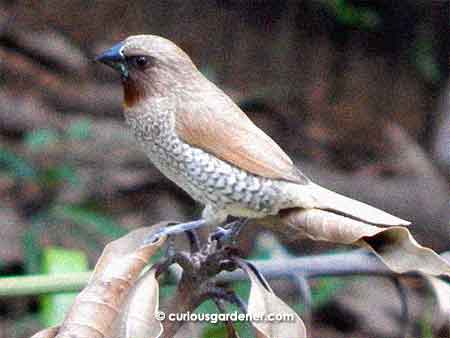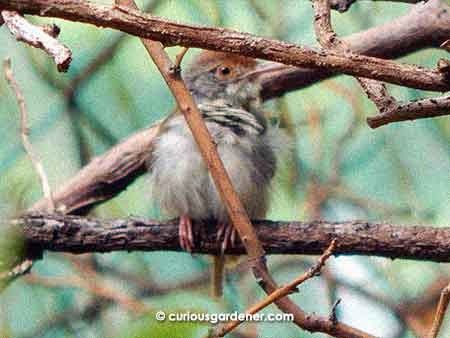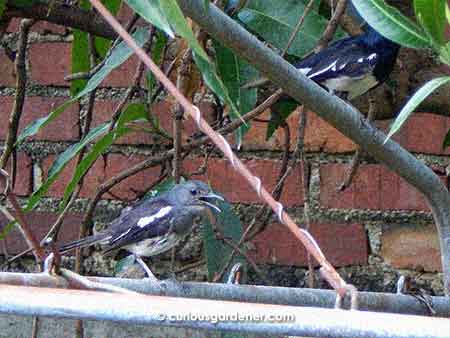We have a neighbour who loves gardening. Their garden is beautifully manicured and neat, and I know, a joy to them. There are lots of colourful flowers and ornamentals, as well as a few edible plants. I guess it suits their wants and needs.
So it must pain them to look at our garden and see how “unkempt” it is, by their standards, with the freely growing (most of the time) plants and messy compost piles. As a matter of fact, we had a visitor a month or so back who commented that if ours was his garden, it would “be beautiful”.
Beauty is of course dependant on your definition of it. Manicured gardens are definitely pleasing to the eye, but less tidy gardens have their charm, too. Part of my way of doing things is to just let plants do their thing and observe what they do, and that’s what has been happening here. Well, it’s also partly because there have been periods when I was simply unable to tend to the garden, and the plants just kept growing.
When that happened, a whole new environment developed. Plants became bushier and merged with each other, creating more shade and places for creatures to live and forage, and breed. Just look up the Fauna category to see what I’ve written about before – some are common birds and fauna while others are rather unusual, but they really do and have come here.
My neighbour with the neat garden has commented wistfully that there are a lot of “unusual” birds in our garden. What caught his attention was what he called the “burung pipit”. I think that is Malay for the sparrow, but if you look it up online, it could mean any of these:

These little sparrows were oh so common back in the 1970s. For whatever reason, they seemed to disappear, but recently began to show up here again.

At a quick glance, the scaly-breasted munia can be mistaken for a sparrow. As long as there’s grass with seeds, they’ll be here. Just look up the video of them feeding at my Youtube channel: https://youtu.be/FhaiP8Rpc-8

The common tailorbird is also easy to confuse with sparrows because it’s small, brown and fast – making identifying it a challenge.
What I’m most pleased about are the Oriental magpie-robins. Once an endangered species in Singapore, they are making a comeback – and have chosen to nest in our garden! People buy these birds because of their beautiful birdsong, and all of us in this neighbourhood now enjoy that for free every day. I have also heard them in other parts of the country, too, and am glad they are getting their old niche back.
Other birds that visit us are those I have mentioned in previous posts. The fact is, many of them would not be here without the kind of habitat that they like. If you think about it, before Singapore became the modern country that it now is, it was an island covered by jungle, inhabited by all these birds and creatures. Some have disappeared while others have learned to adapt to the changing environment or found pockets here and there to live.
Well, I’m glad to share a place that some of them can call home, or just a fast food stop. Yes, having a less than manicured garden also means that there is more life – not just in the foliage, but also in the soil – namely, insects and worms that are food for those higher on the food chain.
I’ve also discovered that plants with old branches that are rotting have an interesting effect. Insects live inside those rotting branches, decomposing them, and that in turn attracts interesting birds like woodpeckers, which we would otherwise rarely see.
So, when we trust nature more than our own nurturing, we get more interesting results. You know which way I lean toward.
© 2015 curiousgardener.com All rights reserved.

